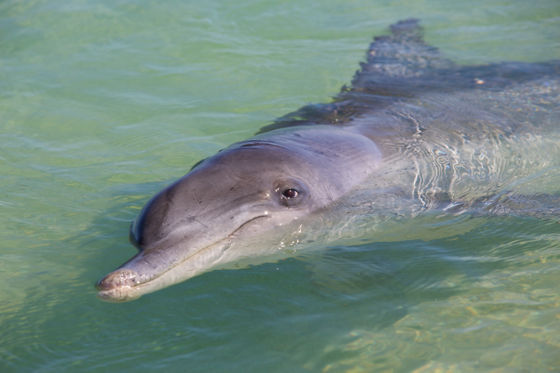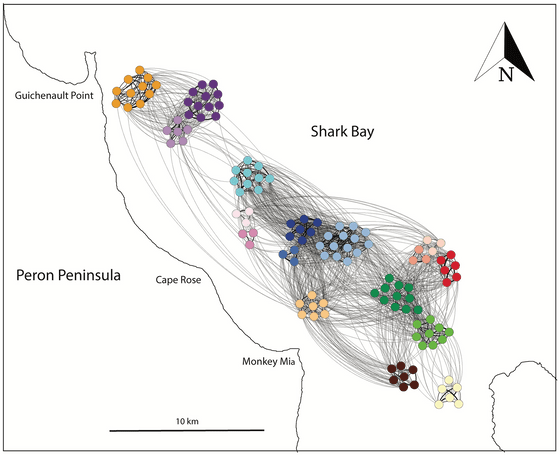Research shows that dolphins with strong bonds between males are more likely to mate with females, and some dolphins even work in teams to assist in picking up friends.

Many people have probably heard the phrase, 'Men who are popular with men are also popular with women.' It turns out that male dolphins who get along well with other males are more likely to mate with female dolphins, not just humans. Humans are thought to be the only species other than dolphins in which males form complex cooperative relationships in competition for females.
Strategic intergroup alliances increase access to a contested resource in male bottlenose dolphins | PNAS
Bromance Leads to Romance For The Ocean's Horniest Species : ScienceAlert
https://www.sciencealert.com/bromance-leads-to-romance-for-the-oceans-horniest-species
Dolphins Have the Largest Alliances, Second to Humans
https://www.treehugger.com/dolphins-have-largest-alliances-second-to-humans-6543709
Males of animals such as chimpanzees are often observed to engage in violent conflicts over mating with females, and these conflicts often escalate into violence. Meanwhile, researchers tracked 121 adult male southern bottlenose dolphins in Shark Bay, western Australia, and found that male dolphins are surprisingly cooperative with each other.

by
According to a paper published in the academic journal Proceedings of the National Academy of Sciences (PNAS) in August 2022, male southern bottlenose dolphins can form 'alliances' with multiple males; It is said that males with strong dexterity had more contact with females. Additionally, when male dolphins pursue females, two or three male dolphins in an alliance form a team to support the female dolphin's courtship.
There are multiple levels of alliances; in addition to the 'first-tier alliance,' which is a team of two to three dogs that help each other courtship, there is a 'second-tier alliance,' which is a team of four to 14 dogs that forms to compete against other alliances. There was also. However, we found that alliances do not always compete with each other; on the contrary, there are also 'tertiary alliances' that cooperate at the alliance level, creating a complex society.
The following is a diagram of the secondary alliances and tertiary relationships of 121 male dolphins in Shark Bay. Follow-up research revealed that there are 12 secondary alliances and 5 tertiary alliances in Shark Bay. Males have friendships with an average of 22 males, and some males have as many as 50 friends.

Males who formed such alliances were more likely to successfully mate with females than those who did not. This is thought to be because cooperating with other males reduces competition and allows more time to court females. The depth of relationships between males had a greater effect on the benefits of alliances than the size of the alliance.
One of the study's authors, Simon Allen from the School of Biological Sciences at the University of Bristol in England, said: 'This is like local football teams, regional teams and national teams. Or local councils, parliaments and international alliances. Until now, such strategic multi-level alliances were thought to be unique to humans.'
It's not clear why dolphins evolved to form these relationships. Unlike humans, dolphins do not form fixed pairs, and males do not participate in raising their young. This promiscuous social structure of dolphins is more similar to chimpanzees than to humans.
According to one theory, this commonality between humans and dolphins may be explained by the `` social brain hypothesis .'' This theory suggests that complex social relationships may have been the driving force behind the evolution of large brains and intelligence in humans and dolphins.
'The discovery of strategic, multi-level alliances formed by male dolphins is a surprising example of convergence that also informs our understanding of human social and cognitive evolution,' the researchers wrote in their paper. said.
Related Posts:







